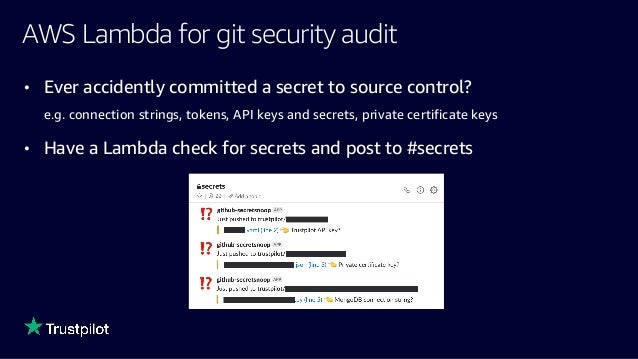
Three years ago, I worked with a serverless architecture project and the Serverless framework, and yet, I found out that this is the best approach for this project. Of course technologies change a lot, too fast, and that’s the greater challenge! How can we keep ourselves updated on this second` changing world? Work overtime my friend, TANSTAAFL! :D
#Serverless naming camelcase android#
This time, I wanted to build a self project to help on COVID-19, and so I started searching for new technologies and I found many great ones! I love working on project structures, so I always have some base code for each platform I use, such as, Android native app, Web development, server, etc. Same user, you must pass the same deviceID to Amplitude.Going Serverless with Node.js and Clean Architecture OverviewĮvery time I start a project I discuss a lot with my team or myself (when on a self project) to find the best technology, architecture, patterns, and everything. Use AdvertisingId for Device ID (Device-mode only)įor Amplitude to associate both device-mode and cloud-mode activity with the Set Device ID From URL Parameter amp_device_id (Device-mode only) This table lists which settings, if enabled, take priority over other settings or values. If you have multiple settings enabled, one setting or value can take priority of another. If you’re using the “Prefer Advertising ID for Device ID” setting with one of our bundled mobile SDKs, the following rules apply.

This option is not currently available for mobile libraries using cloud-mode. If you’re using the “Prefer Anonymous ID for Device ID” setting in client-side, server-side, or a mobile library with Cloud-mode enabled, the following rules apply. The table below represents default behavior. You can set the Device ID in slightly different ways depending on the library and connection mode you’re using (Device-mode vs Cloud-mode). If you’re using Analytics.js in device-mode, or a bundled SDK, Segment automatically includes anonymousId for you. If you’re using a Segment server library or the Segment HTTP API, you must explicitly include both anonymousId and userId. If you don’t include the anonymousId, Amplitude can’t tell that the anonymous user is the same person as the logged-in user. To have Amplitude recognize an anonymous user and a known or logged-in user, make sure you include both the user’s userId and the anonymousId they had before that in your Identify call. Merging users with Anonymous ID and User ID Sets any traits you provide as Amplitude custom user_properties. When you make an Identify call, Segment uses the userId you provide to set the User Id in Amplitude, and you can't make them from A.js client-side. Note: screen calls are only for mobile.

Locate the project you want to receive your Segment data, copy that project’s API key, and paste it into your Amplitude destination settings in Segment. It is a 32-character string of numbers and letters. You can find your Amplitude API key in the Amplitude project settings. In the destination settings, enter your Amplitude API key.


There’s also a page about the Amplitude Engage Segment source, which sends data to Segment! Getting Started Good to know: This page is about the Amplitude Segment destination, which receives data from Segment.


 0 kommentar(er)
0 kommentar(er)
